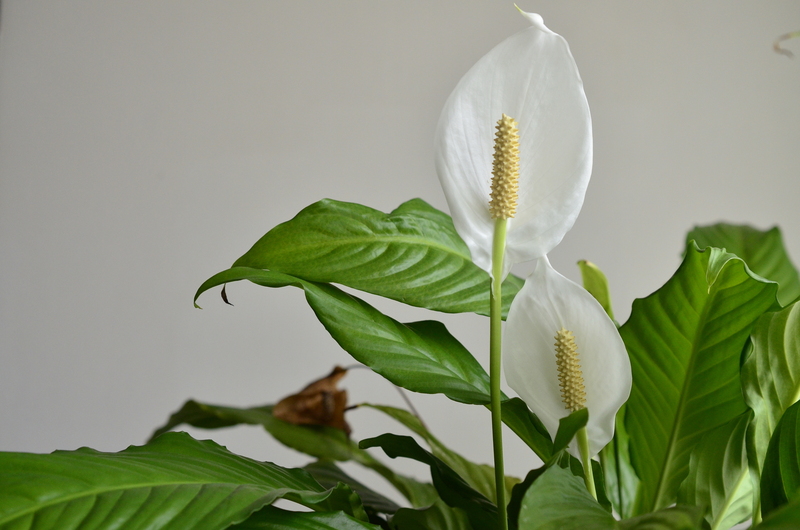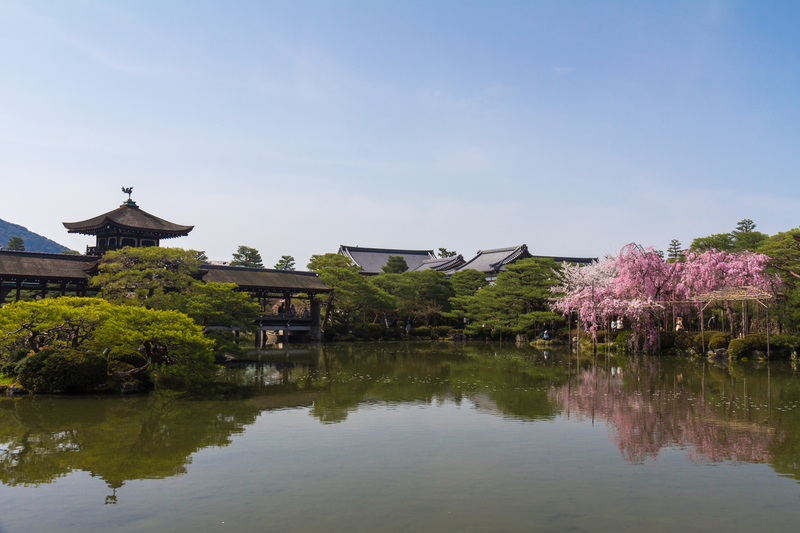Transform Outdoor Spaces with Calming Zen Garden Elements
Posted on 05/06/2025
Transform Outdoor Spaces with Calming Zen Garden Elements
In an increasingly fast-paced world, creating personal sanctuaries at home is more important than ever. Transforming outdoor spaces with calming Zen garden elements offers a perfect way to cultivate peace, mindfulness, and beauty right in your backyard or patio. Incorporating these elements encourages relaxation, reflection, and a deep connection to nature. If you're ready to turn your garden, courtyard, or balcony into a serene retreat, this article will guide you through the essentials, design ideas, and practical advice for establishing a tranquil Zen-inspired outdoor space.
Understanding the Essence of Zen Gardens
Originating in Japan, Zen gardens--also known as karesansui or dry landscape gardens--are designed to emulate the grace and simplicity of nature. These minimalist gardens use natural elements such as stones, sand, gravel, and plants to build a calming, harmonious environment. Zen gardens provide a setting for meditation and contemplation by minimizing distractions and focusing on simple, meaningful arrangements.
Key Principles Behind Zen Garden Design
- Simplicity (Kanso): Every element is chosen intentionally, avoiding clutter and excess.
- Naturalness (Shizen): Features should flow effortlessly with their surroundings, embracing the imperfections of nature.
- Asymmetry (Fukinsei): Balanced yet asymmetric layouts to evoke the randomness of the natural world.
- Tranquility (Seijaku): Quietness and serenity are at the heart of a Zen garden's appeal.
- Symbolism: Elements like rocks and sand represent mountains, rivers, and islands, weaving stories through minimalist design.

Essential Zen Garden Elements for Outdoor Spaces
Incorporating calming Zen garden elements transforms any outdoor area into a sanctuary. These features infuse tranquility and help set a meditative mood. Let's explore the most important elements and how they contribute:
1. Rocks and Stones: The Backbone of Zen Gardens
Stones are the foundation of every Zen-inspired garden. They symbolize mountains, islands, or shorelines and anchor the space both visually and physically. Thoughtful placement is key--each rock is chosen and positioned to maintain balance and evoke natural landscapes.
- Arrangements: Grouping rocks in odd numbers (often 3, 5, or 7) creates visual interest and avoids symmetry.
- Texture and Color: Mixing smooth and rough, light and dark stones enhances depth.
- Standing Stones: Upright stones can serve as focal points or represent inaccessible mountains.
2. Sand and Gravel: Symbolizing Water and Flow
Fine sand or gravel is carefully raked to create patterns that mimic the rippling surface of water or the gentle currents of a stream. This element brings both visual and tactile calmness and invites mindfulness through the raking process itself.
- Patterns: Swirls, waves, or straight lines suggest water movement and offer a canvas for creativity.
- Maintenance: Raking is a meditative practice that nurtures tranquility and order.
3. Water Features: The Sound of Serenity
While traditional dry landscaping focuses on symbolic water, many modern Zen-inspired gardens incorporate actual water elements. The sound of trickling water soothes the senses and masks urban noise, fostering a peaceful atmosphere.
- Ponds: Small, shallow ponds or reflective pools complement the garden's stillness.
- Bamboo Fountains: Shishi-odoshi (bamboo water spouts) provide rhythmic, calming sounds.
- Streams: Gently flowing water channels symbolize life's persistence.
4. Plants and Greenery: Subtle Beauty
Unlike lush, blooming gardens, Zen outdoor spaces use plants sparingly to highlight shape, color, and texture. Plant choices reflect the seasons and encourage contemplation of the passage of time.
- Moss: Provides rich, green carpets and softens stone edges.
- Bamboo: Stately and flexible, bamboo creates vertical lines and gentle rustling sounds.
- Evergreens: Pines, junipers, or cypress maintain structure and provide year-round greenery.
- Maple Trees or Flowering Cherry: Offer seasonal color without overwhelming the senses.
5. Paths and Stepping Stones: Guiding Reflection
Winding stone paths slow the pace and invite mindfulness as visitors move through the landscape. Their natural, irregular shapes encourage reflection and discovery.
- Irregular Layout: Stepping stones should appear organically placed rather than in straight lines.
- Materials: Use natural stone, gravel, or wood to harmonize paths with the surroundings.
6. Simple Structures: Gates, Lanterns, and Bridges
Subtle architectural elements bring structure and symbolism to a Zen garden:
- Torii Gates: Traditional entrances that mark the transition into a sacred, peaceful space.
- Stone Lanterns: Softly illuminate paths and add sculptural interest, especially at dusk.
- Arched Bridges: Small wooden or stone bridges over water or gravel evoke journey and change.
Designing Your Calming Zen Outdoor Oasis
Whether you have a sprawling backyard or a modest balcony, creating a Zen garden for outdoor relaxation is attainable with thoughtful planning. Here are practical steps to help you get started:
Step 1: Define the Space
Assess your outdoor area. Even a corner of a patio or a narrow side yard can be transformed into a Zen retreat. Use natural borders like bamboo screens, hedges, or wooden fences to define boundaries and increase privacy.
Step 2: Plan the Layout
Draft a simple sketch to organize stone placements, sand gardens, water features, and seating areas. Remember, the key is to maintain balance without symmetry, using negative space to enhance focus on each element. Avoid overcrowding to keep the space peaceful and inviting.
Step 3: Select Calming Zen Garden Elements
Choose rocks, sand or gravel, minimalist plants, and other features that align with your vision. When possible, use local and sustainably sourced materials to harmonize with your environment.
Step 4: Install Water Features if Desired
Consider adding a bamboo fountain, a pond, or a mini water wall for gentle, meditative sounds. Opt for recirculating water features to minimize maintenance and water use.
Step 5: Add Paths, Lanterns, and Seating
Place stepping stones to guide movement naturally and install stone lanterns or subtle lighting for ambiance. Integrate simple benches or meditation cushions for restful pauses in your garden sanctuary.
Step 6: Embrace Seasonal Changes
Allow your Zen garden to evolve with the seasons. Accept that moss grows, leaves fall, and stones weather--all part of the living beauty of a Zen space.
Tips for Maintaining a Peaceful Zen Outdoor Space
Proper care is essential to preserving the tranquility of your Zen garden. Here's how to keep your outdoor retreat calm and inviting all year long:
- Regular Raking: Keep gravel and sand patterns defined and free of debris. Raking can be a meditative ritual.
- Weed Control: Maintain clean lines around rocks and paths with regular weeding or manual removal.
- Pruning: Shape shrubs, moss, and trees for a groomed-yet-natural appearance.
- Seasonal Cleaning: Remove fallen leaves and sweep paths, especially in autumn and spring.
- Observe Quiet: Limit noise within your Zen space to nurture peace and reflection.
Creative Zen Garden Ideas for Every Outdoor Space
Whether you own a large property or urban balcony, there's a Zen garden solution for you:
- Mini Zen Garden (Tabletop): Use a tray, fine sand, and small stones for a desktop or patio side table. Rake patterns as a daily relaxation habit.
- Balcony Zen Retreat: Incorporate potted bamboo, a small water fountain, and minimalist seating to bring peaceful vibes to apartment life.
- Courtyard Serenity: Add a stone path, a few lanterns, and carefully pruned shrubs to a cozy interior courtyard for a secluded escape.
- Large Garden Transformation: Map out winding pathways, diverse plant textures, several stone groupings, and a central koi pond for a truly immersive experience.
- Zen Meditation Nook: Dedicate a private garden corner to a meditation mat surrounded by moss and a simple stone arrangement.
The Benefits of Calming Zen Garden Elements
The influence of Zen outdoor spaces stretches beyond aesthetics. Here are some key benefits:
- Stress Reduction: The peaceful setting and gentle sounds help calm the mind and lower stress levels.
- Mindfulness Practice: Raking gravel, pruning plants, and quiet walks foster mindfulness and mental clarity.
- Improved Focus: Minimalist design removes distractions and helps you find calm amidst chaos.
- Connection to Nature: Stones, plants, water, and weather connect you intimately to the natural world.
- Outdoor Enjoyment: Invites you to spend more time outdoors, enjoying all four seasons.

Frequently Asked Questions about Zen Gardens for Outdoor Spaces
What is the best location for a Zen garden?
Choose a quiet, semi-shaded spot if possible--away from heavy foot traffic and loud noises. The goal is to create an oasis where you can relax, meditate, or simply enjoy the view.
Do Zen gardens require a lot of maintenance?
No. Zen gardens are intentionally low-maintenance. Occasional raking, pruning, and weeding are typically all that's required to keep things pristine and peaceful.
Can I make a Zen garden in a small space?
Absolutely! Zen principles can be adapted for any size, from an expansive yard to a compact balcony or even a tabletop arrangement.
What materials are best for a calming Zen garden?
Natural elements--like river stones, coarse sand, pea gravel, mosses, bamboo, and weathered wood--are recommended to achieve a minimalist, harmonious look.
Conclusion: Begin Your Journey to Outdoor Tranquility
By integrating calming Zen garden elements into your outdoor spaces, you're not just enhancing aesthetics--you're crafting a sanctuary for relaxation, healing, and self-reflection. From serene rock arrangements and gentle water sounds to meandering paths and minimalist greenery, each feature contributes to the sense of harmony that defines a true Zen oasis. Start small or reimagine your entire garden--the benefits of mindful design and natural beauty await you every day, right outside your door.
Ready to create your own calming Zen outdoor retreat? Rediscover peace, purpose, and balance by transforming your outdoor space with timeless Zen garden elements today.

